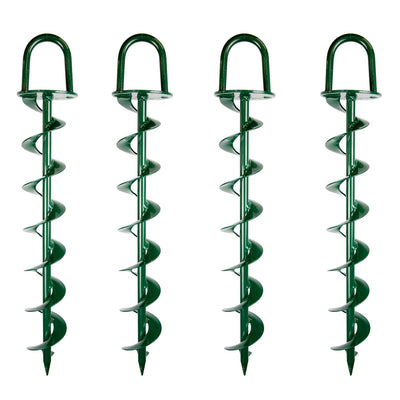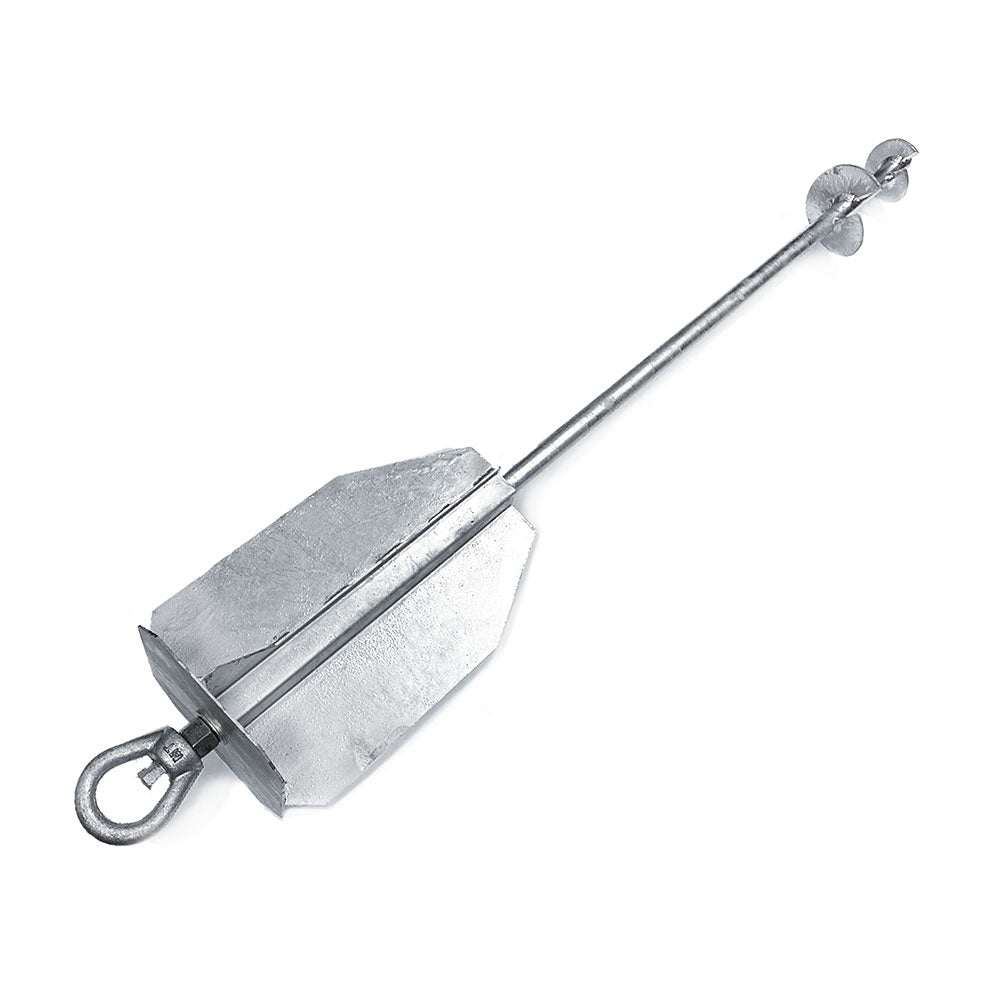The Mechanics of a High-Performance Ground Anchor System
The Mechanics of a High-Performance Ground Anchor System
Blog Article
Discover the Various Types of Ground Anchor for Your Following Project
When getting started on a construction or landscaping job, recognizing the numerous sorts of ground anchors offered is critical to making sure both security and durability (Ground Anchor). From auger anchors, which stand out in varied dirt conditions, to stake supports created for momentary installations, the options are various. In addition, concrete and screw supports existing special benefits in certain scenarios, while deadman supports are customized for applications calling for resistance to lateral pressures. The option of a proper anchor kind can considerably influence the general success of your task, triggering additional expedition into their particular benefits and applications.

Auger Anchors
Auger anchors are a popular selection in various construction and landscaping jobs due to their distinct layout and effective anchoring capacities. These anchors include a helical screw-like shaft that is driven into the ground, enabling a secure and protected hold. The spiral layout helps with very easy setup and takes full advantage of resistance against lateral forces, making auger supports particularly efficient in applications such as secure fencing, short-lived structures, and disintegration control.
The setup procedure of auger anchors is relatively simple. Auger anchors can be easily gotten rid of and reused, which includes to their cost-effectiveness and sustainability.
Among the considerable benefits of auger anchors is their capacity to disperse loads evenly across the surrounding soil, minimizing the threat of dirt disturbance and minimizing environmental impact. Additionally, they are much less at risk to heaving or loosening gradually compared to standard anchoring techniques. Auger supports are an exceptional option for tasks calling for durable and trusted anchoring services.

Risk Anchors
When it comes to protecting structures in a variety of exterior applications, stake supports use a reliable and straightforward remedy. These supports are typically built from long lasting products such as steel or light weight aluminum, made to endure ecological anxieties while supplying optimum stability. Their basic layout permits for fast installment, making them a perfect selection for permanent or short-term anchoring demands.
Risk supports are specifically useful in protecting camping tents, covers, and other lightweight frameworks against wind and weather condition. They function by being driven into the ground at an angle, producing a strong hold that stands up to pull-out pressures - Ground Anchor. The efficiency of risk anchors depends on numerous aspects, including dirt kind, wetness web content, and the angle of setup
For included safety, lots of risk supports include accessory points for ropes or bands, permitting tension adjustments as necessary. In applications such as landscape design or building, they can efficiently stabilize tools or frameworks on unequal terrain. In general, risk supports provide a cost-effective and functional remedy for safeguarding various outdoor setups, making them a preferred selection for professionals and DIY fanatics alike.
Concrete Anchors
Concrete supports offer a durable remedy for safeguarding structures to concrete surface read the article areas, making sure security and safety and security in different applications. These anchors are essential for projects varying from household building and constructions to large-scale industrial setups. They can be found in various types, consisting of development supports, adhesive supports, and undercut anchors, each designed for certain lots needs and environmental problems.
Development supports count on mechanical mechanisms to hold the concrete when set up. They are perfect for tool to heavy-duty applications. Glue supports make use of high-strength epoxy or resin to bond the anchor to the concrete, offering remarkable load-bearing capacities, specifically in fractured concrete circumstances. Undercut anchors produce a special shape within the concrete, giving extraordinary holding power, specifically in applications where tensile lots are widespread.
When carried out appropriately, concrete anchors significantly improve the structural honesty of various tasks, making them vital in contemporary building and construction techniques. Recognizing the particular needs of your project will certainly help in choosing the right kind of concrete support for the job.
Screw Anchors

Screw supports are a functional securing remedy that can be effectively employed in a selection of applications where conventional concrete supports might not be sufficient. These supports are composed of a helical style that enables them to be easily driven into the ground, making them perfect for usage in dirt and various other substratums. Their unique structure supplies outstanding holding power and resistance to pull-out pressures, making them appropriate for many tasks, from landscape design to structural assistance.
Among the main advantages of screw anchors is their convenience of installation. They need marginal equipment and can typically be set up without the requirement for excavation, which saves both time and labor prices. In addition, screw anchors can be removed and recycled, using a sustainable remedy for short-lived applications.
Screw supports are particularly beneficial in locations where soil conditions are testing, such as loose or sandy dirts. Their capability to be mounted at varying depths enables modification based on details project needs. In general, screw supports offer a reliable and reputable securing technique, making them an outstanding choice for designers blog here and specialists seeking efficient services for their jobs.
Deadman Anchors
Deadman supports work as a durable solution for stabilizing frameworks in difficult problems, specifically where standard securing techniques may drop brief. These supports include big, heavy items buried underground, which produce resistance against side pressures. The layout generally involves a horizontal component, such as a block of concrete or a metal plate, hidden in the dirt, to which wires or bands are connected.
The performance of deadman anchors depends on their capacity to disperse lots over a larger location, lowering the danger of failing in unpredictable dirt conditions. They are particularly beneficial in applications such as maintaining wall surfaces, temporary frameworks, and slope stabilization, where dirt motion can compromise the integrity of the structure.
Installment of deadman anchors requires cautious planning to guarantee they are placed at the appropriate deepness and alignment, maximizing their load-bearing capacity. While they have a peek here may call for even more labor and material than lightweight anchors, their dependability in adverse conditions makes them vital for lasting projects. Deadman anchors are flexible and can be adjusted to numerous applications, making them a best option for designers encountering special obstacles in their projects.
Conclusion
Auger supports stand out in diverse dirt conditions, while stake supports fit short-term applications. For concrete surfaces, growth and adhesive anchors supply reputable alternatives, and screw anchors supply flexibility in difficult surfaces.
Additionally, concrete and screw supports existing one-of-a-kind advantages in certain circumstances, while deadman supports are tailored for applications requiring resistance to side pressures - Ground Anchor.Auger anchors are a preferred selection in various building and landscaping jobs due to their special layout and efficient anchoring abilities. They come in different types, consisting of development supports, sticky anchors, and undercut anchors, each developed for certain tons demands and environmental conditions
Adhesive supports use high-strength epoxy or resin to bond the support to the concrete, using remarkable load-bearing abilities, especially in cracked concrete circumstances. On the whole, screw supports offer a trusted and effective securing technique, making them a superb option for designers and specialists seeking effective solutions for their projects.
Report this page